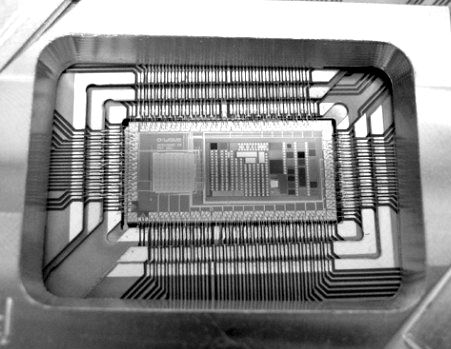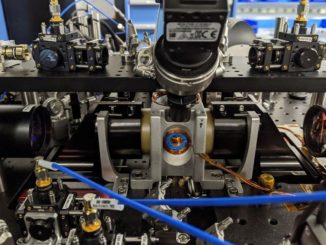
Chinese officials have made no secret out of their desire to become the world’s dominant player in the technology industry. As we’ve written about before at The Next Platform, China has accelerated its investments in IT R&D over the past several years, spending tens of billions of dollars to rapidly expand the capabilities of its own technology companies to better compete with their American counterparts, while at the same time forcing U.S. tech vendors to clear various hurdles in their efforts to access the fast-growing China market.
This is being driven by a combination of China’s desire to increase its strategic, economic and military standing in the world through technology innovation and a desire to improve its national and information security, particularly given U.S. espionage efforts outlined in the documents leaked by former NSA analyst Edward Snowden. Among the goals in the country’s latest five-year plan – spanning 2016-2020 – is to establish China as a key player in technology research, development and innovation and in such areas as computing, robotics and biotechnology. Plans call for continued substantial government investment in these areas.
These efforts can be seen in such high-profile areas as HPC and supercomputing, where Chinese systems hold the top two positions in the Top500 list of the world’s fastest supercomputers, including the Sunway TaihuLight, which sits at number one with 93 petaflops of performance – more than the next five systems combined – is powered by ShenWei’s SW26010 many-core processor, a chip developed in China. At the same time, China is aggressively pushing efforts in exascale computing, with three projects underway to bring exascale systems to market. One project is calling for a prototype – called Tianhe-3 – being readied for 2018. The United States, through the National Strategic Computing Initiative, is preparing two exascale-capable systems for delivery in 2021.
U.S. officials and scientists have warned that the country that dominates the exascale era will have an edge in everything from business to national security to the military. Concern among U.S. scientists have increased in recent months over worries about possible federal budget cuts to scientific projects under the Trump Administration, which under the president’s proposed budget called for the Department of Energy’s Office of Science – which funds research into exascale computing, among other areas – to lose some $900 million from its $5 billion budget.
Scientists in the United States now are voicing concern that recent reductions in government funding and other challenges are threatening the country’s narrowing lead over China in another critical area – quantum technologies. In testimony given this month to the U.S.-China Economic and Security Review Commission, John Costello, senior analyst for cyber and East Asia at Flashpoint and a Cybersecurity Fellow for New America, warned that the United States narrowing lead in this crucial area is endangered by China’s aggressive funding and research. Losing the lead to China would have far-reaching consequences for both countries.
“The U.S. remains at the forefront of quantum information science, but its lead has slipped considerably as other nations, China in particular, have allocated extensive funding to basic and applied research,” Costello said in a written statement to the commission. “Consequently, Chinese advances in quantum information science have the potential to surpass the United States. Once operationalized, quantum technologies will also have transformative implications for China’s national security and economy. As the United States has sustained a leading position in the international affairs due in part to its technological, military, and economic preeminence, it is critical to take swift action to reverse this trend and once again place the United States as a frontrunner in emerging technologies like quantum information science.”
Quantum computing has been talked about for decades, and there have been efforts underway around quantum computing for much of that time. Current computers use bits that are in states either 0 or 1. Quantum systems use quantum bits – or qubits – that can be 0 and 1 at the same time. In addition, they are entangled – they share this same state with two or more qubits, but if interrupted by an outside force, will revert back to one of the two states, Costello said.
“In the future, quantum computers will be able to resolve complex algorithms, including those integral to most standard encryption methods,” he said. “Computations that would be impossible or infeasible for classical computers to perform can be performed by quantum computers at sufficient scale.”
D-Wave currently is the only vendor that offers a commercially-available quantum computer – the company’s latest D-Wave 2000Q has 2,000 qubits – though Costello said the systems use a form of computation called “quantum annealing” that is not considered “true” quantum computing. Other U.S. vendors, like IBM and Google, and agencies like NASA are creating public-private research groups. IBM last year made quantum computing capabilities available on the IBM Cloud to help drive innovation in the space, and this month announced IBM Q, a new division that aims to commercialize universal quantum computers for both commercial and scientific uses. In China, the highest-profile public-private partnership is through Alibaba and the Chinese Academy of Sciences (CAS). The Alibab Quantum Computing Lab is aiming to be able to coherently manipulate 30 qubits by 2020, to create a quantum simulation that has calculations speeds of today’s fastest supercomputers by 2025, and develop a quantum computer prototype with 50 to 100 qubits by 2030.
In his lengthy testimony, Costello argued that China – due in large part to significant government investment – is moving faster in innovating around quantum technologies (not only computing, but also cryptography and sensing, which includes such possibilities as quantum clocks, imagery, radar and navigation) and urged U.S. lawmakers to take steps to at least keep pace with efforts by the Chinese government. He noted some successes by China already, including the development of Micius, a quantum satellite that can transmit quantum information between it and multiple ground stations, and upcoming completion of the Quantum Beijing-Shanghai Trunks a ground quantum optical fiber communications system that will stretch about 1,240 miles between the cities. Plans are to expand it nationwide over the next few years and linked with other metropolitan-level quantum communications networks, and then develop a similar network between Asia and Europe by 2020. By 2030, a global network is planned. In September 2016, scientists from a lab within China 45 Electronics Technology Group Corp. announced they’d made progress in creating a quantum radar that they said will be able to detect targets up to 100 kilometers away with better accuracy than current radars.
Costello’s comments about the danger the United States faces in falling behind in the quantum computing research and innovations echoes what others have found. He noted a study by MIT and a report in The Economist that the reduction in government funding has slowed innovation. In addition, a 2016 report by the Obama Administration focused on federally-funded quantum IS programs also noted a narrowing innovation gap, caused by multiple factors, including an instability of funding levels, education and workforce training, technology and knowledge transfer, and institutional boundaries within academic institutions. A key advantage for China is the stability of funding, Costello said.
“The lack of consistent funding at home, coupled with ample Chinese funding abroad, may persuade researchers to collaborate with China on larger projects or pursue their research in Chinese institutions,” he said, pointing out that an Austrian scientist had developed the technical expertise for a quantum satellite like Micius, but was unable to get funding in Europe, opening the door to China developing the technology. “It should be noted that these factors do not account for the substantial advantages the U.S. enjoys over China in the area of overall quality and number of academic institutions, venture capital investment, industrial and technological base, and quality and speed of private innovation. However, these advantages are narrowed considerably by China rising economic dominance, multiple forms of tech transfer, talent recruitment programs, and comprehensive state-level R&D funding programs.”
His recommendations to Congress focused on ensuring lawmakers better understand emerging technologies like quantum IS, machine learning and artificial intelligence. Included in his recommendations are the creation of publicly-funded think tanks to study issues around the technologies and China’s innovation efforts and the restoration of public funding for the Office of Technology Assessment (OTA), which was funded between 1972 and 1995 to give Congress in-depth evaluations and policy options around emerging technologies. Current agencies like the Government Accountability Office and Congressional Research Service haven’t been able to give lawmakers the same level of expertise as the OTA. Costello also called for the creation of an interagency Commission for Investment in Strategic Emerging Technologies, which could better assess U.S. funding efforts around R&D, make recommendations to Congress and coordinate the work of relevant federal agencies.
It’s important that the country takes such steps, he said.
“Due to the pace of innovation and economy, the first-to-market advantage here is exponential and will yield near intractable market dominance,” Costello said. “The United States is already challenged by the industrial might and growing human resource base of China’s emergence on the world stage. Some of the few, though critical, advantages the United States possesses is dominance in emerging technologies, world-class academic and research institutions, and a central position in information and Internet technologies. If continued Chinese investment in these areas are not met with an appropriate U.S. response, these factors will shift, likely at the expense of the United States, and the strategic balance of power will continue to tilt in China’s favor.”





this is just an excuse to get funding